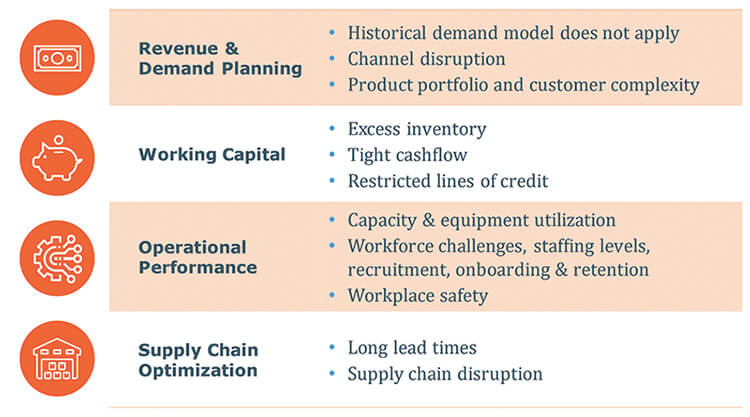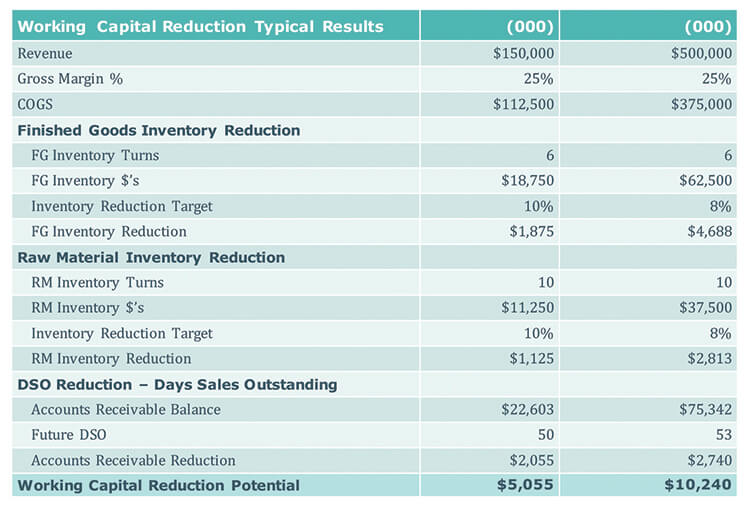As the dust settles on first quarter results, many private equity-owned, middle-market manufacturers escaped the period without breaking their covenants. The rest of 2020 will be a different story, especially for businesses not deemed 'essential.'
Given the potential exemptions to potential covenants, breaking them are the least of their worries for many manufacturing business leaders. With such a precipitous drop in near-term demand, cash is the only real protection against insolvency. Keeping as much cash as possible is now the name of the game. Over the past several months, private equity fund managers have recently conducted portfolio analysis to determine where they should spend their limited time to ensure liquidity. Not all companies can or will be saved.
With or without CARES Act relief, portfolio companies are taking a range of immediate actions to free up cash and survive while preparing to reopen. While the number of operating partner roles in PE firms has been growing, many of them have now been deluged with requests to support multiple businesses. Despite these challenges, much can be done.

In the near-term, as an example, a business with $100 million in COGS and 55 days of DSO can potentially free up $4-$6 million in cash within 90 days. We’ve seen multiple manufacturers realize such benefits within recent months.

Below are a some specific areas that our middle-market clients are now leveraging to free up cash while they simultaneously prepare to restart
- Quickly Adjust Capacity to Near-Term Demand. Market sector demand has changed dramatically. For one of our clients, demand from automotive customers has collapsed while food sector orders are way up. As a result, some of their production lines and facilities are struggling with insufficient capacity while others have little or no orders to run. The faster that lines can be converted to support the shift in product demand, the greater the cashflow benefit will be.
- Effectively Manage the Inbound Supply Chain. Most companies have already cut off unneeded inbound orders where possible, and renegotiated supplier terms and payment schedules. What else in your replenishment process needs to change? For some manufacturers up to 80% of inbound material is delivered through some form of kanban, and not MRP. Large bin sizes representing days of demand may trigger far more material than will be needed over the next quarter. Ordering algorithms must now be based more on future expected demand patterns and not the past. Turning off the automated replenishment processes, conducting manual reviews and resizing can yield significant cashflow benefits.
- Run Sales & Operations Planning More Frequently. Given all of the economic uncertainty, any sales forecasts will be off. The question is by how much? Matching incoming supply to expected demand will be critical for maximizing near-term cash benefits while also serving your customer base. That requires a clear understanding of capacities and a strong process to support a regular review of planning parameters. Running your S&OP process far more frequently will help manage the uncertainty. Depending on the business, weekly runs (as detailed in our recent article about the S&OP cadence during COVID) should be considered.
- Redirect Existing Inventory. Demand for some raw materials and work-in-process inventory will remain low for some time. Can some of the high-value, slow-moving inventory be repurposed? Your slow-moving inventory may now be in high demand by another business. One of our clients with metal that wouldn’t be used in the near term resold it to an 'essential' business, convert it into cash without any discount.
- Reduce Your Days Sales Outstanding and Order-to-Cash Cycle. There has probably never been a more urgent need to reduce waste and time at both ends of the order-to-cash cycle. For some companies, a one-day reduction in DSO is easily worth $1 million or more. Here is what several manufacturers we work with are focused on now:
- Customer Credit – In highly uncertain times manufacturers need to prioritize orders based on which customers will pay their invoices, and how fast. Fulfilling orders from those that are not paying within agreed-upon terms increases risk and can significantly undercut cashflow.
- Front-end Business Processes – For engineer-to-order or made-to-order businesses, process changes can be made to streamline workflow and free up cash. A 3D imaging client recently achieved a 40% front-end lead time reduction that will reduce in their order-to-cash cycle time by seven weeks.
- Backend Business Processes – The accounts receivable process is often riddled with issues that unnecessarily extend receipt of payment beyond agreed upon terms. While some customers will always pay faster than others, many delays are caused by internal processes and non-standard work. With minimal effort we have helped companies halve their AR term overages. How much cash could that free up for you?
These are a few of the strategies that middle-market manufacturers are taking to maximize cashflow today. Can you add to this list?





